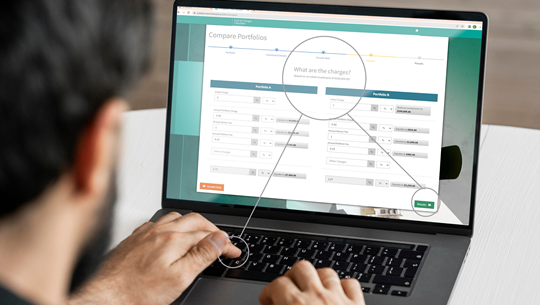We asked Rob Botha, Head of Data at FE fundinfo, how we helped the European Fund and Asset Management Association (EFAMA) to boost transparency.
- To begin, who are the European Fund and Asset Management Association?
EFAMA is the representative association for the European investment management industry, which represents (through its 28 member associations), more than EUR 25 trillion in assets under management. EFAMA launched an industry initiative to introduce a classification system for cross border investment funds, to allow for meaningful comparisons between funds with similar strategies. This initiative is called the European Fund Classification (EFC).
- Can you give a brief introduction to the collaboration between FE fundinfo and EFAMA?
To address a market need for stronger coverage, FE fundinfo has begun providing the European Fund Categorization Forum (EFCF), a task force of the European Fund and Asset Management Association (EFAMA), with an Indicative Classification (IC) for funds distributed in Germany and Switzerland. The IC is a new component of the European Fund Classification (EFC), which has been developed by the EFCF to permit simple comparison of cross-border funds with comparable investment strategies. We are now providing the IC within its data to address the market need for a stronger coverage of funds.
- Can you explain how we came to be involved with the project?
The project has actually been going on for almost three years. We were looking for a pan-European classification system of investment funds which is transparent and fully defined and could be an alternative to existing offerings. By including this in our data set our user base can access peer group comparisons. The EFC model was immediately very interesting to us due to its support from fund groups, vendors, national associations and distributors. The EFAMA backing further added to its appeal.
We initially wanted to adopt it straight away but realised that the number of funds classified was too low. You really need to have whole of market coverage to perform any meaningful peer group comparison, and that’s why we decided to help increase the coverage by applying a different classification, i.e. IC, that offered greater coverage.
- What exactly has FE fundinfo’s role been?
We have thrown our support behind the initiative by applying the indicative classification to all funds sold in Switzerland and Germany, which has boosted coverage by approximately 50,000 share classes and 13,000 funds. We have applied the classification without the need for groups to provide full portfolio data and we generate this based on published data that we already collect, such as objectives, breakdowns, benchmarks etc.
- What were the challenges involved in collecting and providing this data?
The current EFC model is very granular, so it is often the case that a sector only has one fund attributed to it. That is not enough to constitute a peer group, which makes it very difficult for meaningful comparisons to be drawn. We hope to work with the EFCF to introduce a level to the model which allows for peer groupings that can result in rankings and performance calculations.
Given that the initiative had been in existence over 10 years before we got involved, arguably the biggest challenge was and continues to be increasing the awareness and usage of this industry classification.
- What are the benefits both for the industry and for FE fundinfo?
Firstly, with the increased coverage, more cross border funds can be compared and provides an alternative classification set for asset managers and distributors throughout Europe. With demand, we expect to extend the classification into further countries.
Secondly, as part of this process, fund groups can have their funds classified for free and the classification results are provided to the market free-of-charge.
- What is the aim going forward?
Going forward, we are committed to raising the awareness of the EFC, encouraging fund managers and distributors to adopt and use it. We will also aim to make it available in our database and across our FE Analytics and FinXL products. We would also like to collect feedback from the market about how the model is working and to address the granularity issue, with a goal to introduce a level to the model which allows for meaningful peer group comparisons. As the initiative becomes better known, the next goal will be for new markets to be included. Now that we have laid the ground work to integrate the model into our system, there is no reason why the other markets that we cover, shouldn’t be able to be run through the same process to receive a classification.
To find out more, please contact us.


